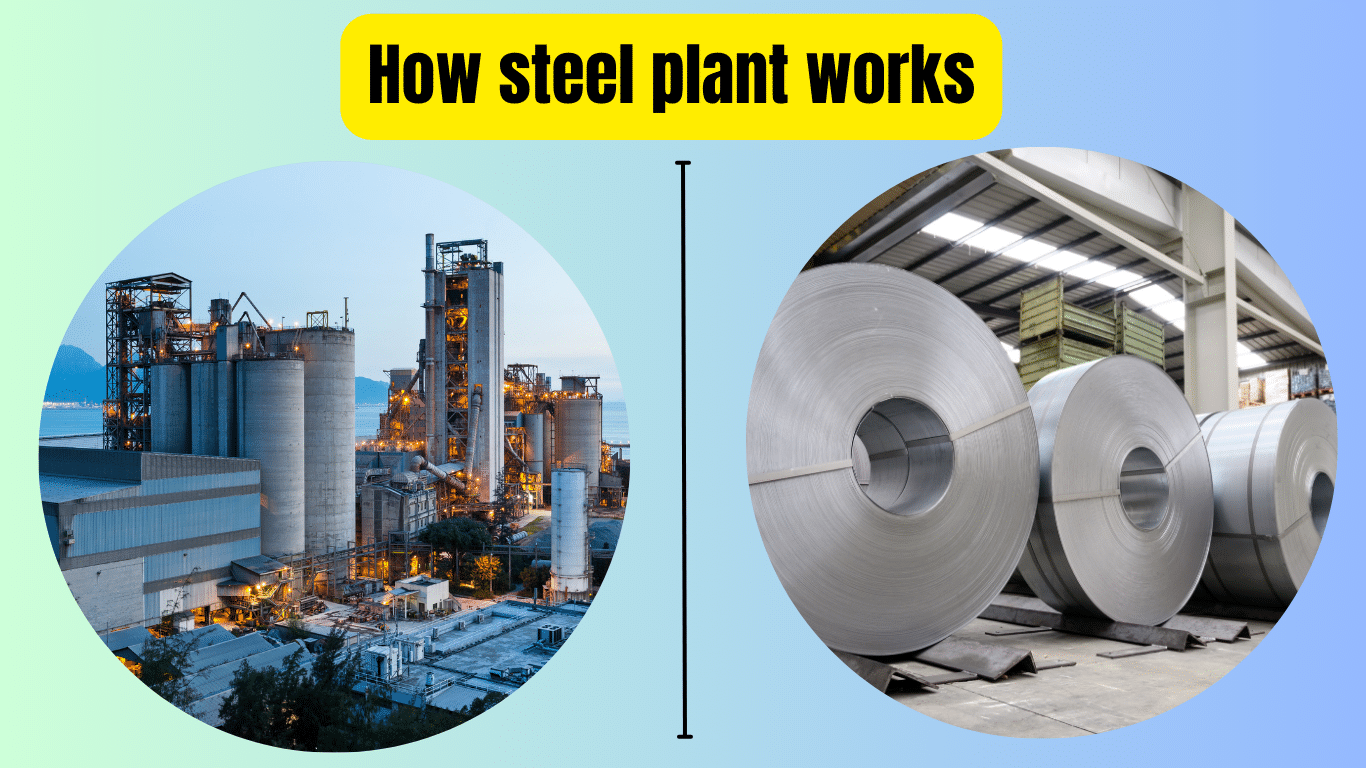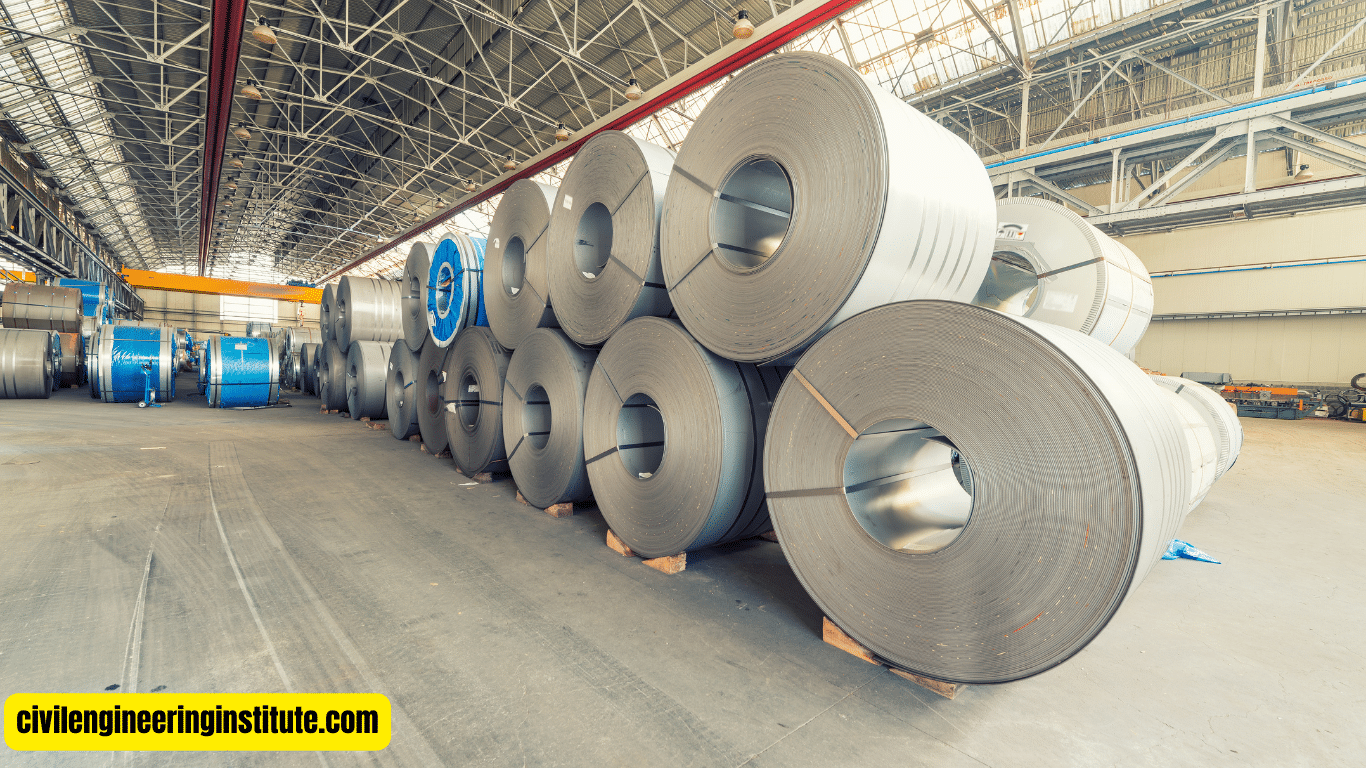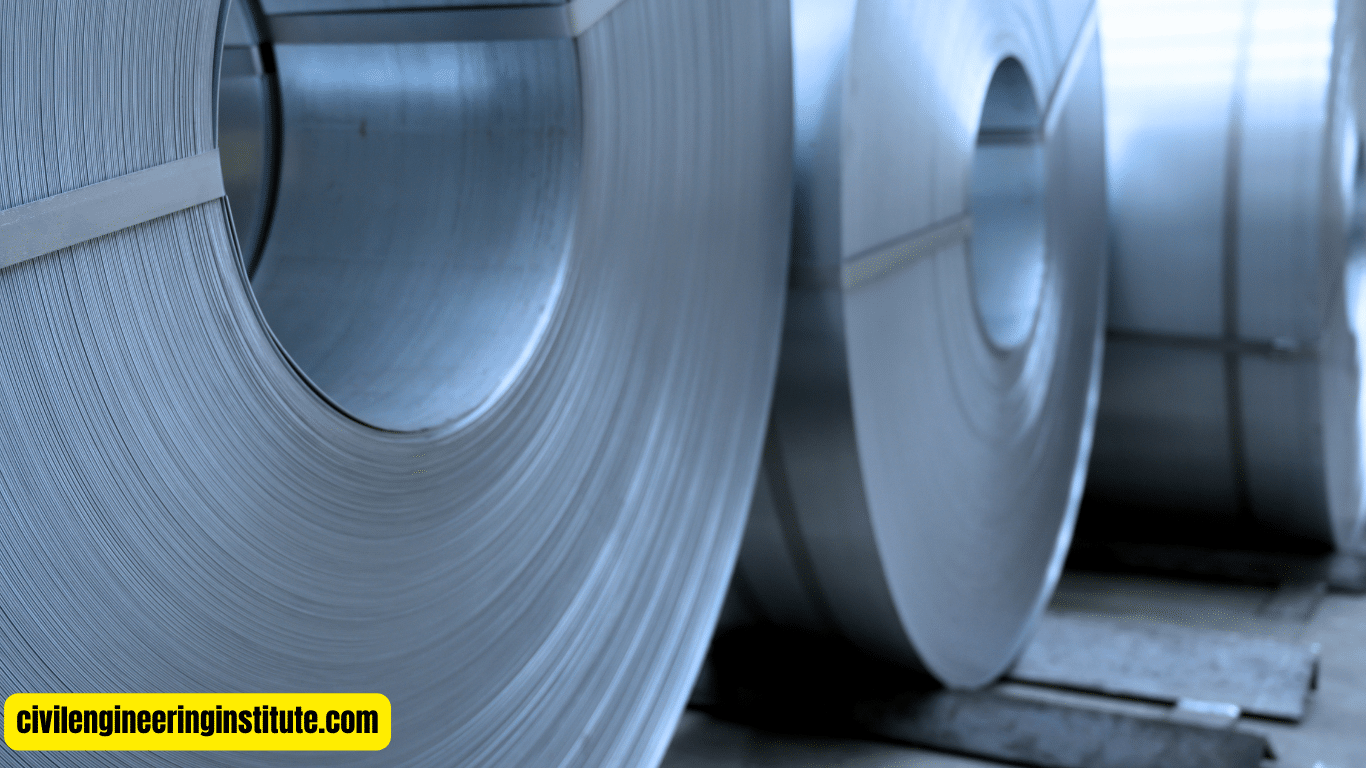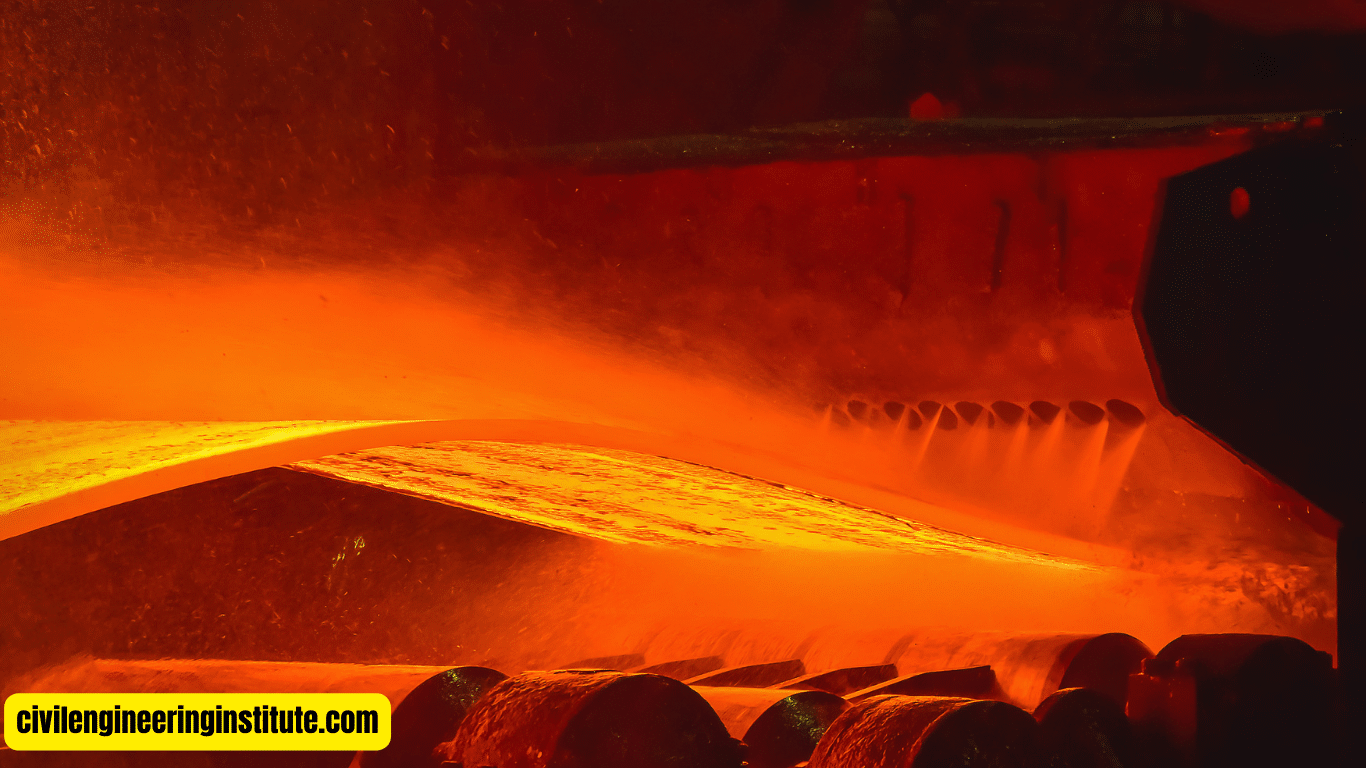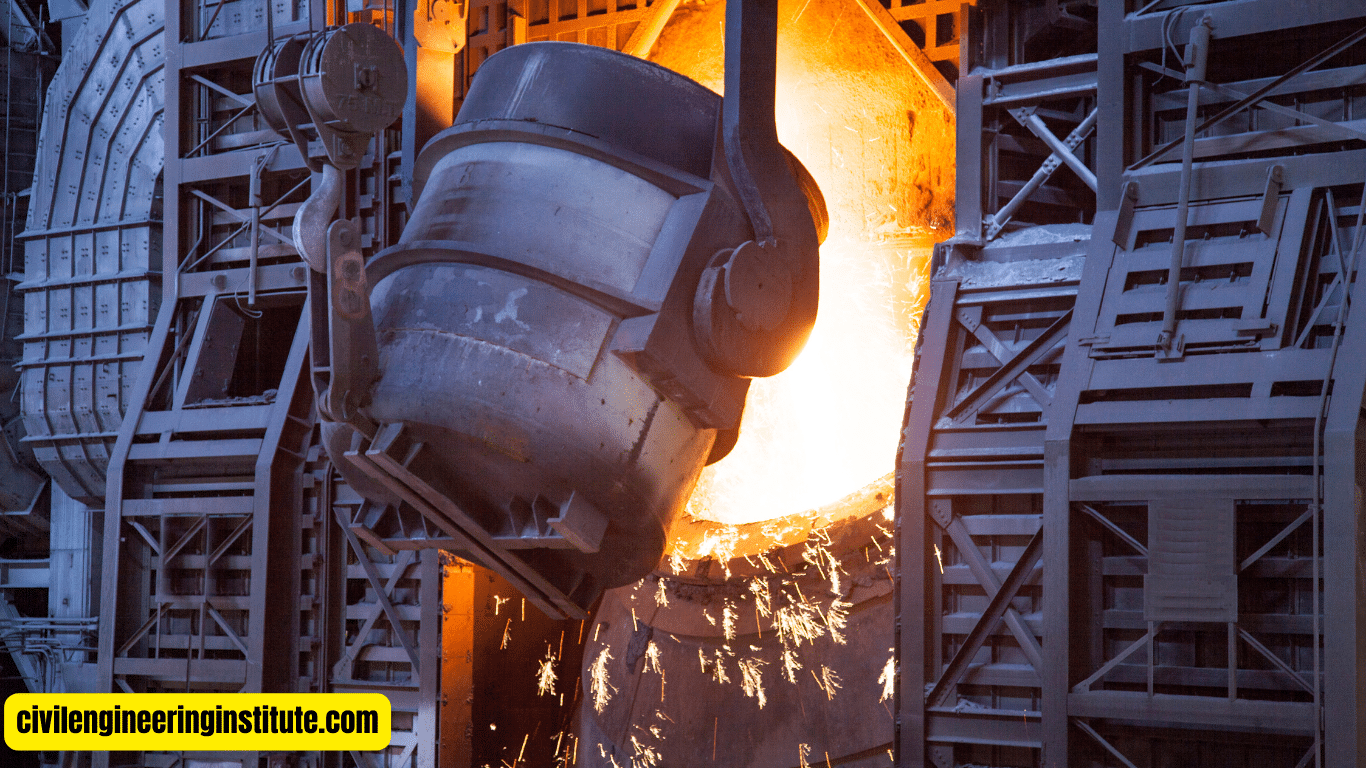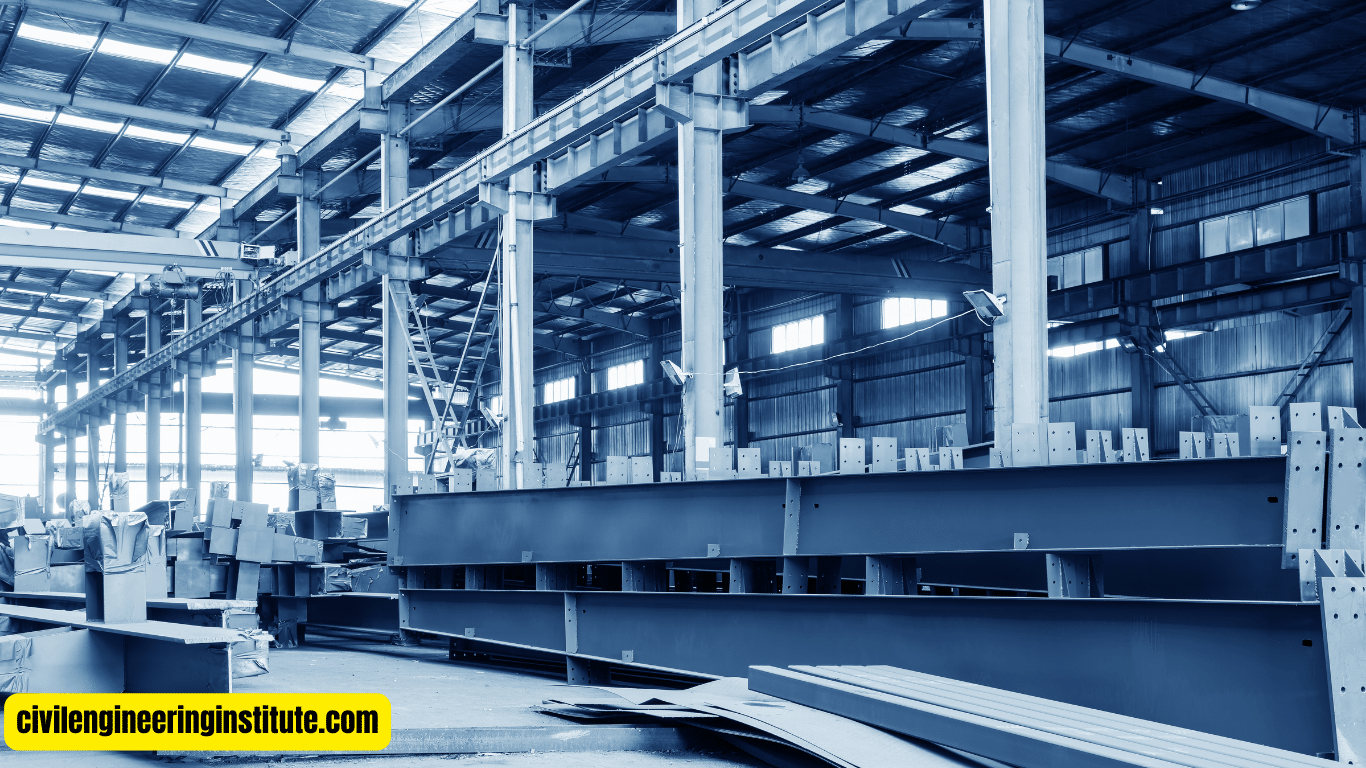How steel plant works it just by transforming raw materials like iron ore, coal, and limestone into steel through a series of processes. First, the iron ore is extracted from mines and refined into iron in blast furnaces by removing impurities. Then, in a basic oxygen furnace or an electric arc furnace, the molten iron is further refined by adding scrap steel and other alloys to produce the desired steel composition. Next, the molten steel is cast into ingots or continuously cast into slabs, billets, or blooms.
These semi-finished products are then rolled or formed into their final shape, such as sheets, plates, bars, or structural shapes, through hot or cold rolling processes. Finally, the finished steel products undergo various finishing treatments, such as heat treatment, surface coating, and inspection, before being shipped to customers. Overall, a steel plant operates through a complex but efficient series of steps to produce the versatile and essential material used in countless industries worldwide.
Understanding How Steel Plant Works: From Raw Materials to Finished Products
Steel is one of the most widely used materials in the world, playing a crucial role in various industries, from construction to automotive manufacturing. Have you ever wondered how steel is made? In this article, we’ll explore the fascinating process of how a steel plant works, breaking down each step from raw materials to finished products in easy-to-understand language.
What is a steel plant?
Before diving into the process, let’s understand what a steel plant is. A steel plant, also known as a steel mill or steelworks, is an industrial facility where raw materials are transformed into steel. These facilities are equipped with various machinery and equipment to carry out the complex processes involved in steel production.
Raw Materials
The journey of steel begins with raw materials, primarily iron ore, coal, and limestone. These raw materials are essential ingredients in the steel-making process. Iron ore is mined from deposits and transported to the steel plant, where it undergoes processing to remove impurities and create iron concentrate, which is then used in the next steps of steel production.
Ironmaking
The first major step in steel production is ironmaking, where the iron ore is transformed into molten iron. This process typically takes place in a blast furnace, a towering structure lined with refractory materials. Inside the blast furnace, a combination of iron ore, coke (a form of coal), and limestone is heated to extreme temperatures, causing chemical reactions that result in the formation of molten iron and slag. The molten iron, heavier than the slag, settles at the bottom of the furnace and is tapped off periodically.
Steelmaking
Once molten iron is obtained from the blast furnace, it undergoes further refinement in a steelmaking furnace. There are several methods of steelmaking, including the basic oxygen furnace (BOF) and the electric arc furnace (EAF). In the BOF process, oxygen is blown into the molten iron to oxidize impurities, while in the EAF process, an electric arc is used to heat and melt scrap steel and other raw materials. These processes allow for precise control over the chemical composition of the steel, resulting in high-quality products.
Continuous Casting
After steelmaking, the molten steel is cast into semi-finished forms using a process called continuous casting. In this process, the molten steel is poured into a water-cooled mold, where it solidifies into a continuous strand. As the steel strand exits the mold, it is cut into specific lengths, known as billets, blooms, or slabs, depending on the desired final product.
Hot Rolling
The semi-finished steel products produced in the continuous casting process are further processed through hot rolling. Hot rolling involves passing the steel through a series of rollers at high temperatures to reduce its thickness and shape it into the desired form, such as sheets, plates, or bars. This process improves the mechanical properties of the steel and achieves the desired dimensions.
Cold Rolling (Optional)
In some cases, the hot-rolled steel may undergo additional processing through cold rolling. Cold rolling involves passing the steel through rollers at room temperature to further refine its surface finish, thickness, and mechanical properties. Cold-rolled steel is often used in applications where a smooth surface finish and tight dimensional tolerances are required.
Finishing Processes
Once the steel has been rolled to its final dimensions, it undergoes various finishing processes to enhance its properties and appearance. These processes may include heat treatment, surface coating (such as galvanizing or painting), cutting, and inspection for quality control. These finishing processes ensure that the steel meets the specifications required for its intended use.
Some Key Points: How the Steel Plant Works
How do steel factories work?
Steel factories, also known as steel plants or steel mills, operate through a series of complex processes to transform raw materials into finished steel products. The process typically begins with the extraction of iron ore from mines, which is then refined into iron in blast furnaces. The molten iron is further refined in steelmaking furnaces, where impurities are removed and alloying elements are added to create the desired steel composition. The molten steel is then cast into semi-finished forms, such as billets or slabs, through continuous casting. These semi-finished products undergo further processing through hot or cold rolling to achieve the desired dimensions and mechanical properties. Finally, the finished steel products undergo various finishing processes, such as heat treatment, surface coating, and inspection, before being shipped to customers.
How does a steel plant operate?
A steel plant operates through a series of interconnected processes that transform raw materials into finished steel products. These processes include ironmaking, steelmaking, continuous casting, rolling, and finishing. Ironmaking involves extracting iron from iron ore in blast furnaces, while steelmaking refines the molten iron into steel through the addition of alloying elements. Continuous casting produces semi-finished steel forms, which are further processed through hot or cold rolling to achieve the desired shape and dimensions. Finally, finishing processes, such as heat treatment and surface coating, ensure that the steel meets the required specifications before being shipped to customers.
How did the steel process work?
The steelmaking process begins with the extraction of iron ore from mines. The iron ore is then refined into iron in blast furnaces by removing impurities and creating molten iron. The molten iron is further refined in steelmaking furnaces, where alloying elements are added to create the desired steel composition. The molten steel is then cast into semi-finished forms through continuous casting, which are subsequently processed through rolling to achieve the desired shape and dimensions. Finally, the finished steel products undergo various finishing processes to ensure quality before being shipped to customers.
Who is the world’s largest steel factory?
As of the latest information available, the world’s largest steel factory is Baowu Steel Group Corporation Limited, headquartered in China. Baowu Steel Group is the largest steel producer in the world by production volume and operates numerous steel plants and facilities across China.
What are the 4 methods of steel production?
The four main methods of steel production are:
- Blast Furnace-Basic Oxygen Furnace (BF-BOF)
- Electric Arc Furnace (EAF)
- Direct Reduction Processes
- Electric Induction Furnace
These methods vary in their reliance on different raw materials and energy sources and are used depending on factors such as the availability of raw materials, energy costs, and environmental considerations.
How steel is produced in Tata Steel?
Tata Steel, one of India’s leading steel producers, utilizes various methods of steel production, including blast furnace-basic oxygen furnace (BF-BOF) and electric arc furnace (EAF). In the BF-BOF process, iron ore is smelted in blast furnaces to produce molten iron, which is then refined into steel in basic oxygen furnaces. In the EAF process, scrap steel is melted in electric arc furnaces and refined into steel through the addition of alloying elements. Tata Steel also employs continuous casting and rolling processes to produce a wide range of steel products for various industries.
Which is the biggest steel plant in India?
The largest steel plant in India is the Tata Steel plant located in Jamshedpur, Jharkhand. Established in 1907, Tata Steel is one of the oldest and largest steel producers in India, with a diverse range of products and a significant presence in both domestic and international markets.
Which is stronger steel or iron?
Steel is generally stronger and more durable than iron due to its composition and manufacturing process. Steel is an alloy of iron and carbon, with the addition of other alloying elements such as manganese, chromium, and nickel, which impart additional strength and properties to the material. Steel is widely used in various industries for its superior strength, versatility, and durability compared to iron.
Who invented steel?
Humans have been producing and using steel for thousands of years, but Sir Henry Bessemer and Sir William Siemens developed the modern steelmaking process in the 19th century. Bessemer’s invention of the Bessemer converter in the 1850s revolutionized steel production by allowing for the mass production of high-quality steel at a lower cost.
How is carbon added to steel?
Carbon is typically added to steel during the steelmaking process to enhance its strength and hardness. Typically, blast furnaces add carbon-rich materials like charcoal or coke to the iron ore in order to achieve this. Additionally, carbon can be introduced to the molten steel during the steelmaking process through the addition of carbon-rich alloys or by adjusting the carbon content through refining processes. The amount of carbon added to steel influences its properties, such as strength, hardness, and ductility.
Conclusion
In conclusion, the process by which a steel plant works is a complex yet fascinating journey from raw materials to finished products. Each step in the process plays a crucial role in producing high-quality steel that is used in countless applications around the world. By understanding the intricacies of steel production, we gain appreciation for the vital role that steel plays in our everyday lives and the industries that rely on it for innovation and progress.
FAQs
What is a steel plant, and how does it work?
A steel plant is an industrial facility where raw materials like iron ore and coal are transformed into steel. It works by heating and refining the raw materials to create molten iron, which is then further processed to produce steel.
What are the main steps involved in steel production at a steel plant?
The main steps in steel production at a steel plant include ironmaking, steelmaking, continuous casting, rolling, and finishing processes. These steps involve transforming raw materials into finished steel products through various processes.
How is iron extracted and refined in a steel plant?
Iron is extracted from iron ore through a process called smelting in blast furnaces. The iron ore is heated to high temperatures with coke (a form of coal) and limestone, resulting in the formation of molten iron, which is then refined to remove impurities.
What is steelmaking, and how is it done in a steel plant?
Steelmaking is the process of refining molten iron into steel by adding alloying elements and adjusting the composition. This is typically done in steelmaking furnaces like the basic oxygen furnace (BOF) or electric arc furnace (EAF) by blowing oxygen or using electric arcs.
How does continuous casting work in steel production?
Continuous casting is a process used in steel plants to cast molten steel into semi-finished forms, such as slabs or billets, in a continuous manner. This involves pouring molten steel into water-cooled molds, where it solidifies into the desired shape.
What is the role of rolling in steel production?
Rolling is a process used to shape and form semi-finished steel products into their final dimensions and shapes. This is achieved by passing the steel through rollers at high temperatures (hot rolling) or room temperature (cold rolling) to achieve the desired thickness and shape.
What are the finishing processes in steel production, and why are they important?
Finishing processes in steel production include heat treatment, surface coating, cutting, and inspection. These processes are essential for enhancing the properties and appearance of the steel, ensuring that it meets the required specifications for its intended use.
How does a steel plant ensure quality control in steel production?
Quality control in steel production is achieved through rigorous testing and inspection processes at various stages of production. This includes testing the chemical composition, mechanical properties, and dimensions of the steel to ensure it meets the required standards.
What are some environmental considerations in steel production at a steel plant?
Steel production can have environmental impacts due to emissions of greenhouse gases and pollutants. Steel plants implement various measures to minimize these impacts, such as using energy-efficient technologies, recycling scrap steel, and implementing pollution control measures.
What are the different types of steel products produced at a steel plant?
Steel plants produce a wide range of products for various industries, including sheets, plates, bars, beams, pipes, and automotive components. These products serve diverse applications in construction, manufacturing, transportation, and infrastructure development.
